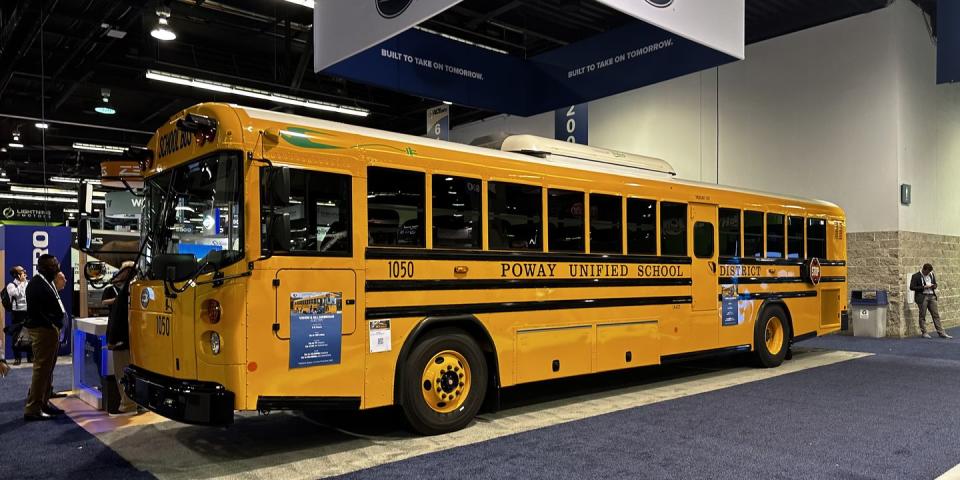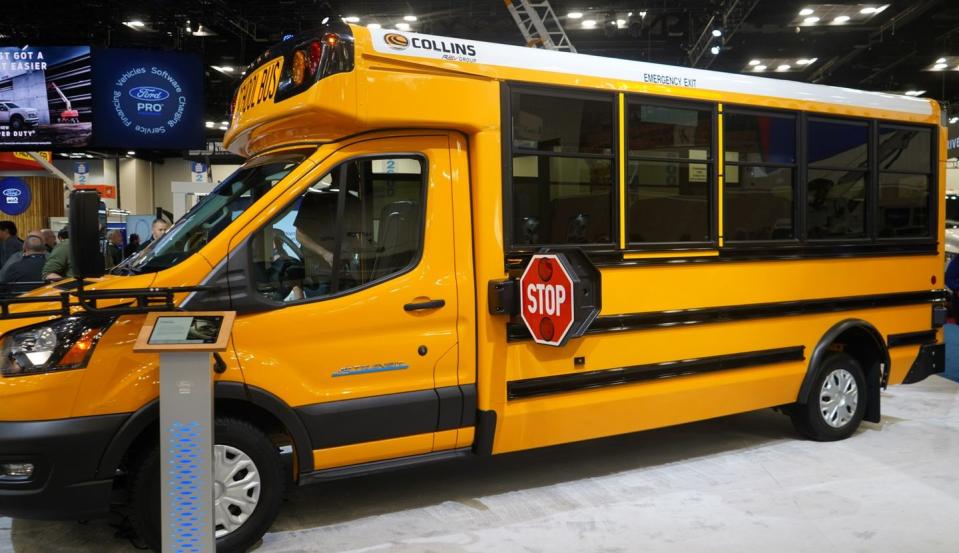You're About to See Way More Electric School Buses—Here's Why

Federal—and state and local—funding for cleaner work vehicles is hitting communities across the country. At the ACT Expo this week, electric school bus companies were happy to show off their zero-emission options.
Ford started taking orders for its small Type A bus, built on an E-Transit chassis. Lightning eMotors uses a commercial vehicle platform from GM, Proterra batteries, and its own electric powertrain.
Electric school buses are used on a schedule that aligns almost perfectly with demand response load balancing, which could provide schools with another way to reduce costs once the technology actually works.
Electric school buses are here. And there. And over there. Last year, 2400 electric school buses were ordered in the U.S., according to the 2023 State of Sustainable Fleets report. That's not a large percentage of the country's estimated fleet of 500,000 school buses, but between 2002 and 2026, the Environmental Protection Agency (EPA) will provide $5 billion for cleaner buses, including low-emission technologies like CNG and propane. Companies eager to take part in this growth were on full display at the Advanced Clean Transportation Expo in Anaheim, California, this week.
Battery-powered buses from Blue Bird, BYD, and Lion Electric were scattered on the show floor. The GreenPower Motor Company brought their bus, called the Nano Beast. And Ford announced it will start taking orders for a new school bus upfit kit that works with the all-electric E-Transit model.

Ford offers the E-Transit in three different roof heights and three body lengths and in chassis cab, cutaway, or cargo van models. The electric bus starts life as an E-Transit T-350 chassis cab that uses a 125.0-kWh lithium-ion battery that provides around 120 miles of range. A 180-mile extended-range model will also be available. An average school bus only travels 74 miles a day, but the extended-range option is vital for e-buses to work in rural areas, especially in the winter, explained Christian Kreipke, Ford Pro brand manager for vans (which includes buses).
Ford's partner Collins installs its Type A School Bus Prep package onto the E-Transit's rails. The finished bus can carry up to 12 seated passengers, or eight with two wheelchairs, and includes a number of features found on standard school buses, like safety glass and a dual-note horn. The electric powertrain will make a new option possible for the kids. Pro Power Onboard, which can power electronic devices from the EV's battery, is a popular feature of the F-150 Lightning. It is not currently available to order on the bus, but Kreipke said Ford is scrambling to get it implemented.
Ford Pro Power Onboard for Kids' Devices
"The reason why we didn't offer before is, to be frank, we really didn't see a use case," Kreipke told Car and Driver. "The main [customer request] is to be able to have jacks so the kids can plug in their laptop, iPhone, or whatever. One of the ways you can achieve that is with Pro Power Onboard."

 Yahoo Autos
Yahoo Autos 